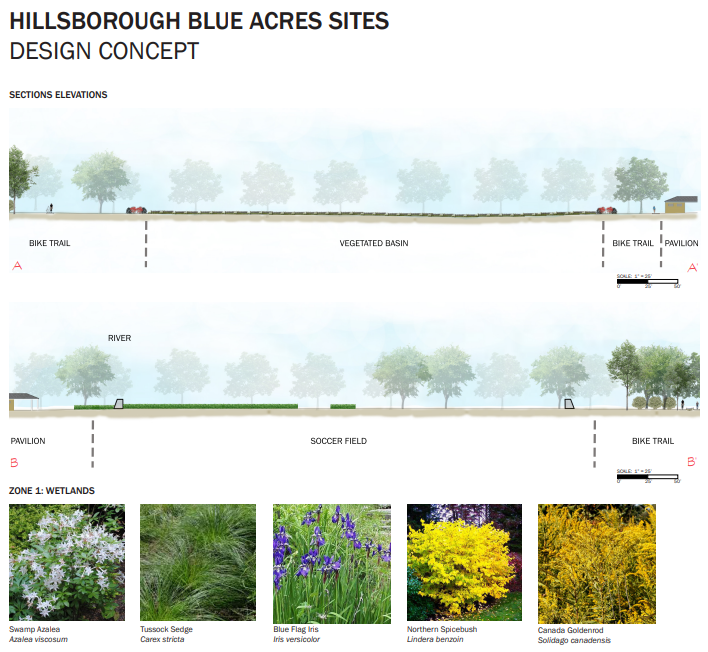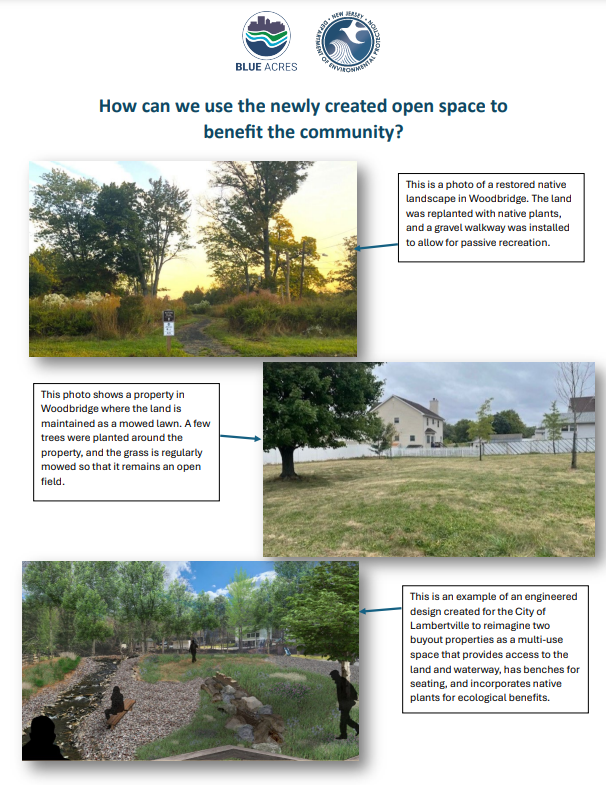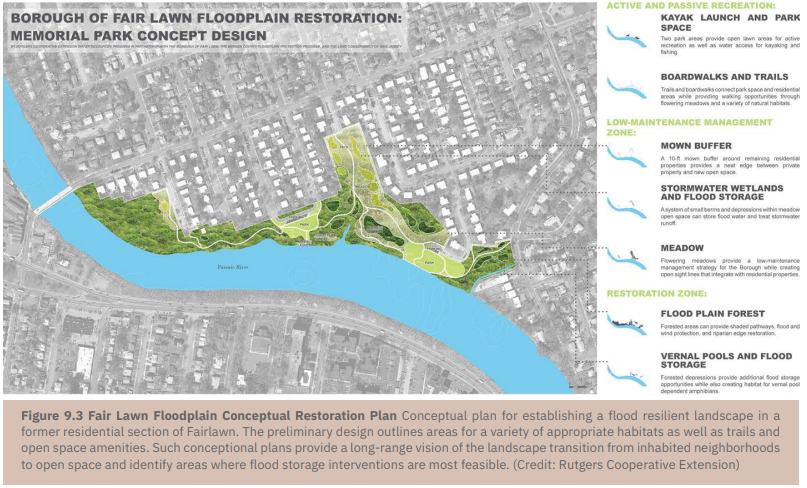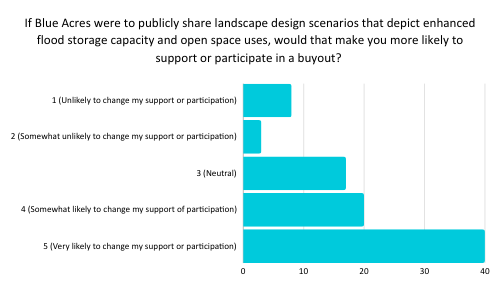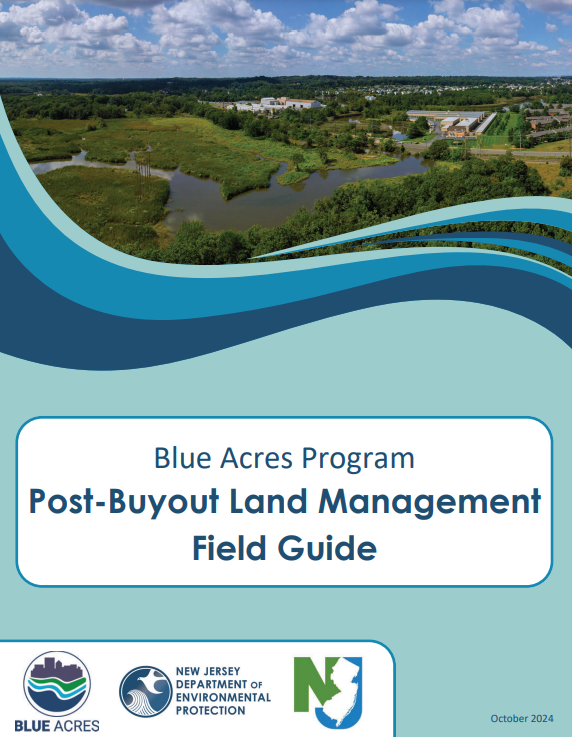
Blue Acres Post-Buyout Land Management Field Guide (2024)
Last modified on June 24th, 2025 at 2:18 pm
“Blue Acres Post-Buyout Land Management Field Guide”, developed by a former intern, provides an overview of natural floodplain functions, authorized uses of Blue Acres properties, and strategies for managing encroachments on State-owned lands. This guide is intended to help municipalities and other stakeholders effectively manage and utilize acquired open space lands for flood risk mitigation and climate resilience.
Key Sections of the Guide
- Obligations of Municipalities:
- Outlines the responsibilities of municipalities in managing Blue Acres properties to ensure compliance with state regulations and promote flood resilience.
- Flood Risk Mitigation for Climate Resilience:
- Discusses strategies and practices for mitigating flood risks and enhancing climate resilience through effective land management.
- Functions of a Floodplain:
- Soil Compaction, Porosity, and Permeability: Explains the importance of soil health in floodplain management, including how soil compaction, porosity, and permeability affect flood resilience.
- Vegetation and Runoff: Highlights the role of vegetation in managing runoff and reducing flood risks.
- Benefits of Healthy Floodplains: Describes the ecological and community benefits of maintaining healthy floodplains.
- Authorized Uses of Acquired Open Space Land:
- Provides guidelines on what activities and uses are permitted on Blue Acres properties to ensure they contribute to flood resilience and ecological health.
- Prohibited Uses of Acquired Open Space Land:
- Lists activities and uses that are not allowed on Blue Acres properties to prevent actions that could undermine flood resilience efforts.
- Addressing Unauthorized Uses of Blue Acres Open Space:
- Identifying Encroachments: Explains how the severity of encroachments on buyout properties is determined by the cost and effort required to restore the land and the extent of soil impact.
- Encroachment Examples: Provides examples of common encroachments and how they can impact floodplain management.
- Preventing Misuse: Recommends actions municipalities can take to prevent and address misuse of Blue Acres open space.
- Creative Uses of Blue Acres Open Space:
- Encourages innovative and community-friendly uses of Blue Acres properties that align with flood resilience goals, such as creating recreational areas or restoring natural habitats.
